Chapter 17.72
COMMERCIAL AND MULTIFAMILY DESIGN STANDARDS
Sections:
17.72.010 What this chapter does.
17.72.040 Architectural standards.
17.72.010 What this chapter does.
This chapter provides standards and guidelines for the site and building design of commercial and multifamily developments. Although these standards are not required for industrial parks, warehouses, or large corporate office or campus developments, they are highly encouraged. [Ord. O-11-2008 § 3 (Exh. B § 24.1)].
17.72.020 Purpose.
The purpose of this chapter is to provide standards and guidelines to enhance the visual quality of development, to help create developments that encourage pedestrian activity, to promote buildings of lasting architecture and aesthetic appeal, to increase functionality and safety of parking areas for pedestrians and vehicles, to minimize the visual expanse of pavement through good site design, and to ensure that a sense of place is created and maintained while the city experiences growth and development. This chapter shall be applied to all commercial and multifamily projects within the city and shall be reviewed during the site plan application process. [Ord. O-11-2008 § 3 (Exh. B § 24.2)].
17.72.030 Site design.
The arrangement of different elements of a project on the site is vital to creating an environment that is focused on the street and the pedestrian, rather than the vehicle and parking areas. A site can be designed to be visually appealing from the street and still be functional and safe for vehicular circulation and pedestrian access. Minor variations to these standards may be considered by the planning commission and city council if a property contains one of the following constraints: wetlands, steep hillsides, major drainage washes, unusual property shape, existing easements, or a similar constraint/difficulty that can be directly tied to a design standard and adequately justified by the applicant.
A. Building Location. Buildings should be located at or near the minimum front setback line, with pedestrian access leading to the primary entrance and landscaping placed between the building and the street. Parking should be located to the side or the rear of commercial buildings, not between the street and the building. If parking is situated between the building and the street, significant increases in landscaping, berming, and architectural features are required to break up and screen the expanse of pavement.
1. Commercial Building Orientation. The primary entrance to a commercial building should be oriented toward the street and the sidewalk. Orienting the primary entrance to a parking area without addressing the street-facing facade with entrances, display windows, awnings, increased architectural elements, increased landscaping, and/or other pedestrian-oriented features is prohibited.
2. Multifamily Building Orientation. Multifamily developments often have buildings facing onto internal courtyards and open space. The buildings adjacent to streets, however, shall front those streets and provide a primary entrance toward the street. If the side of a building faces a street, an entrance should be provided on that facade. Blank walls and/or rear facades should not be placed adjacent to streets. Orienting the primary entrances to a courtyard or open space without addressing the street-facing facade with entrances, windows, awnings, increased architectural elements, increased landscaping, and/or other pedestrian-oriented features is prohibited.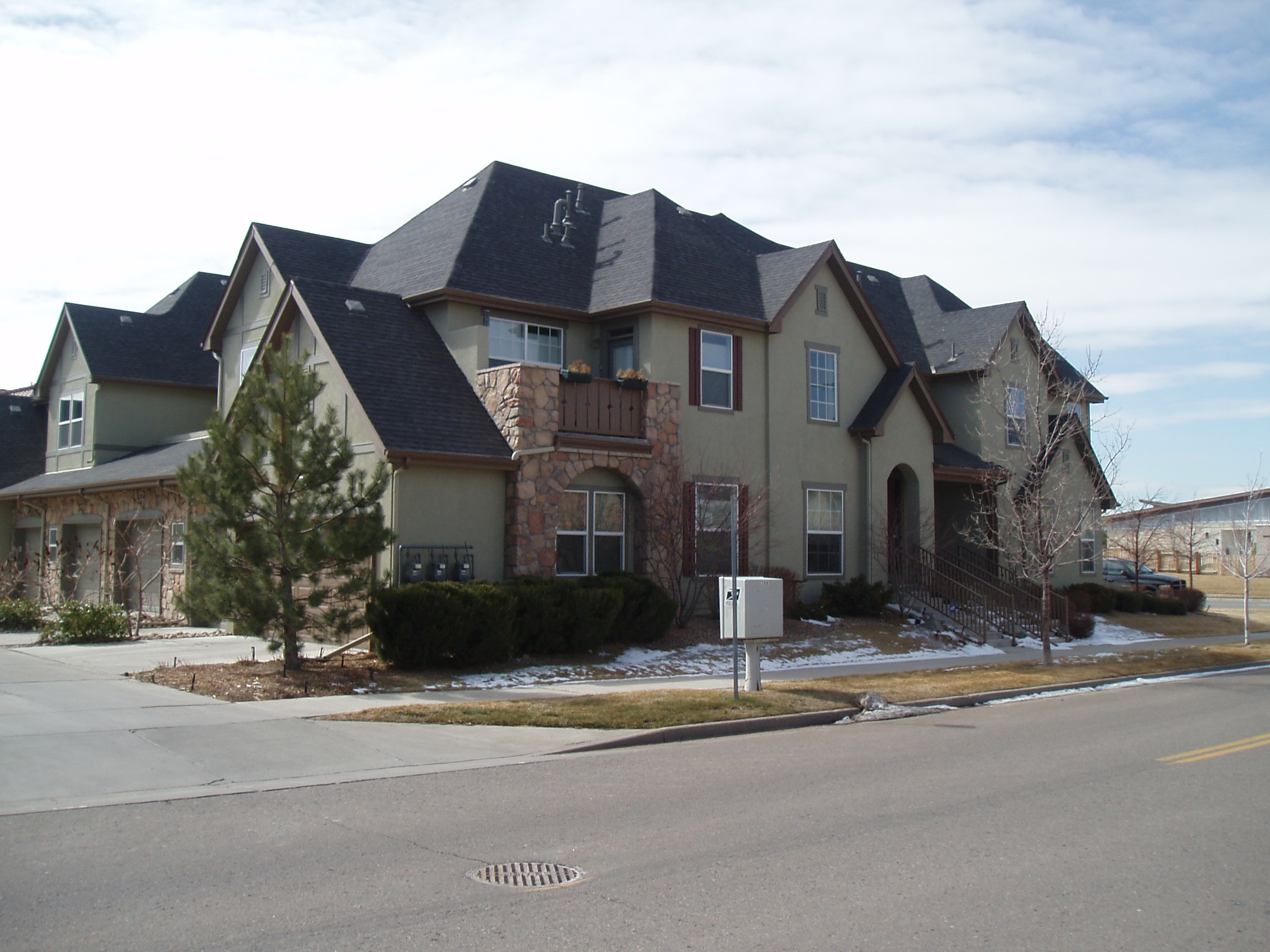
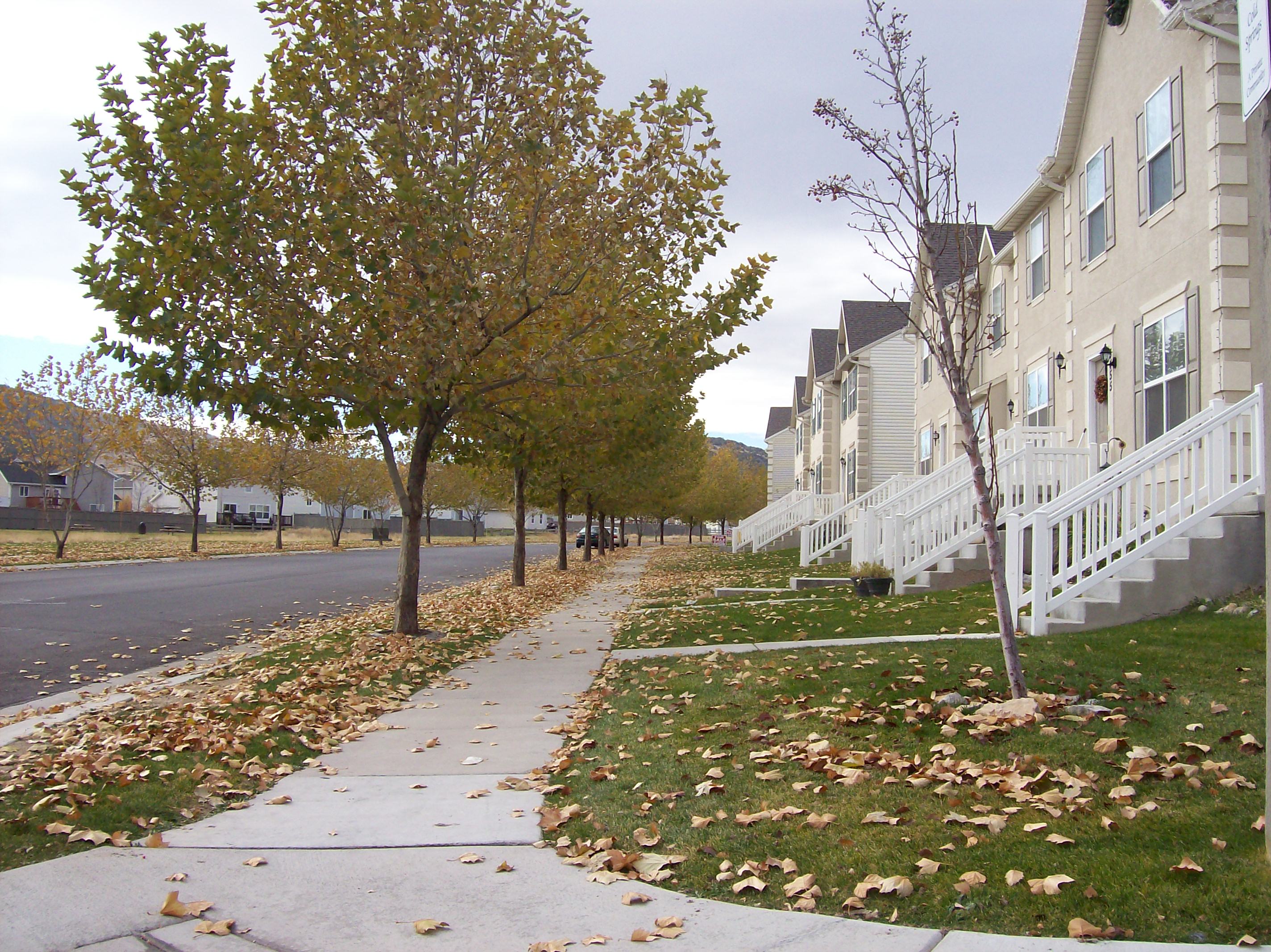
B. Commercial Parking Location. Locate surface parking to the side or the rear of buildings. Parking should not be located between any commercial building and the street. This is especially important on corners. Large 30,000+ square-foot buildings shall follow the same standard, or be designed with pad site buildings along the street edge to screen the expanse of pavement.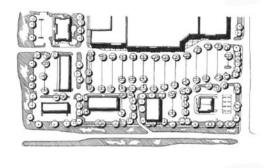
Inappropriate – Parking and pavement between pad site buildings and street; buildings do very little to screen parking
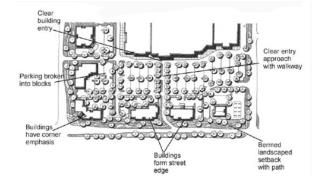
Appropriate – Pad site buildings are placed at street edge and shield a majority of the parking area
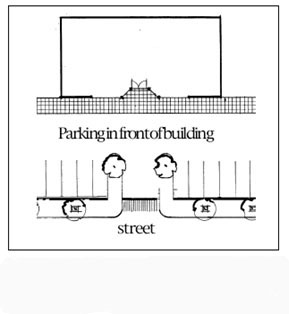
Discouraged – Parking between building and street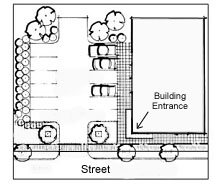
Appropriate – Parking to the side of the building and behind the front facade of building
C. Multifamily Parking/Garages. Garages and parking areas should be placed to the rear of buildings, accessed by a service drive. If garages are placed on the front facade, they shall be staggered and set back so as to minimize their appearance from the street. Garages shall never dominate the street-facing facade of a building.
1. Fire Access.
a. Access Off of a Minimum 26-Foot-Wide Over-Sized Alley or Service Drive (Functions in Such Case as a “Fire-Access Road”). The 26-foot-wide drive fire access, when used, shall be restricted to having parking along only one side (those sides which adjoin fire hydrants) and shall have “No Parking” signs posted along those same sides. In cases where a roadway is at least 35 feet wide, parking may be allowed along both sides of a fire access road and no parking restriction will be required.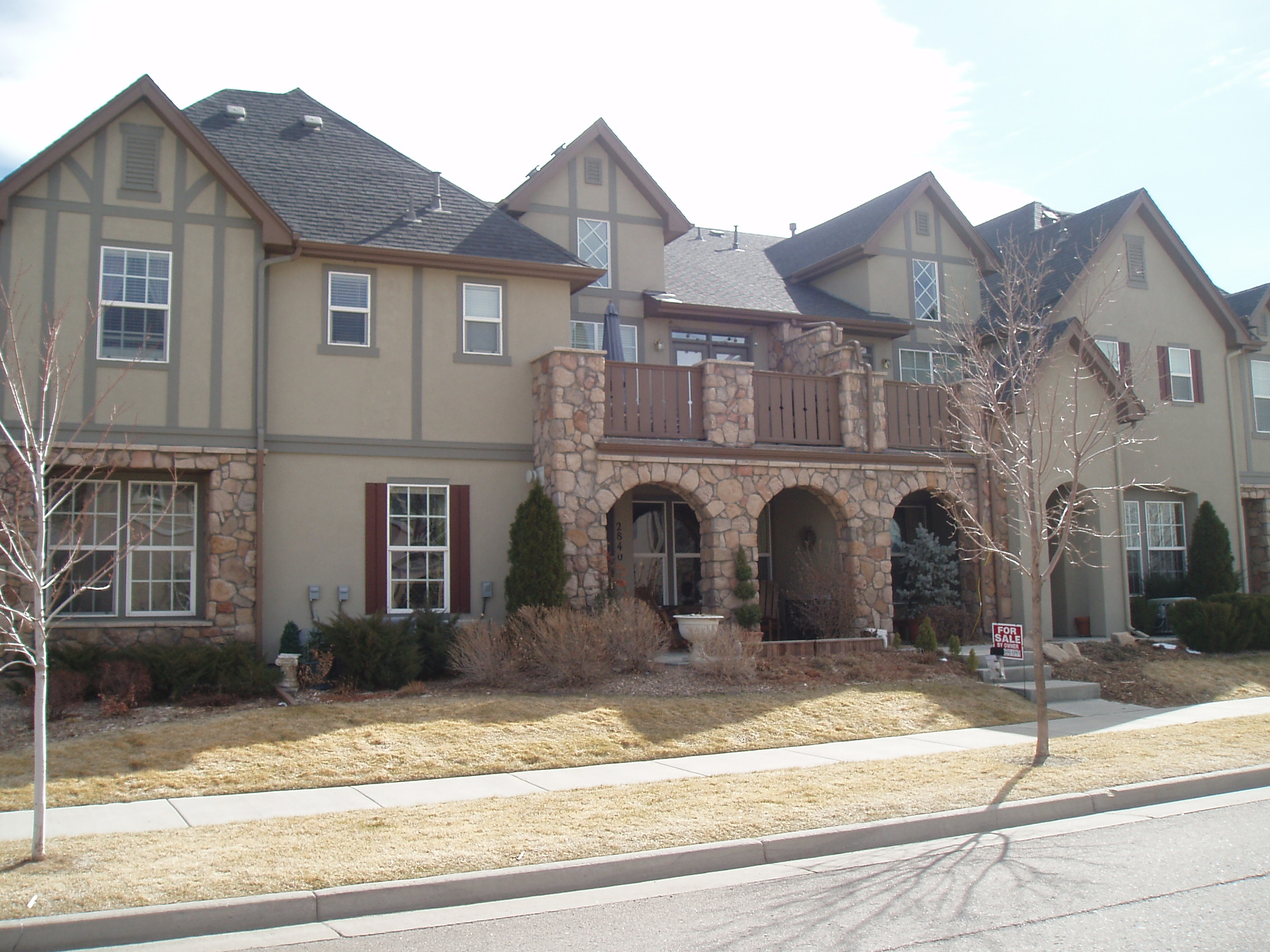
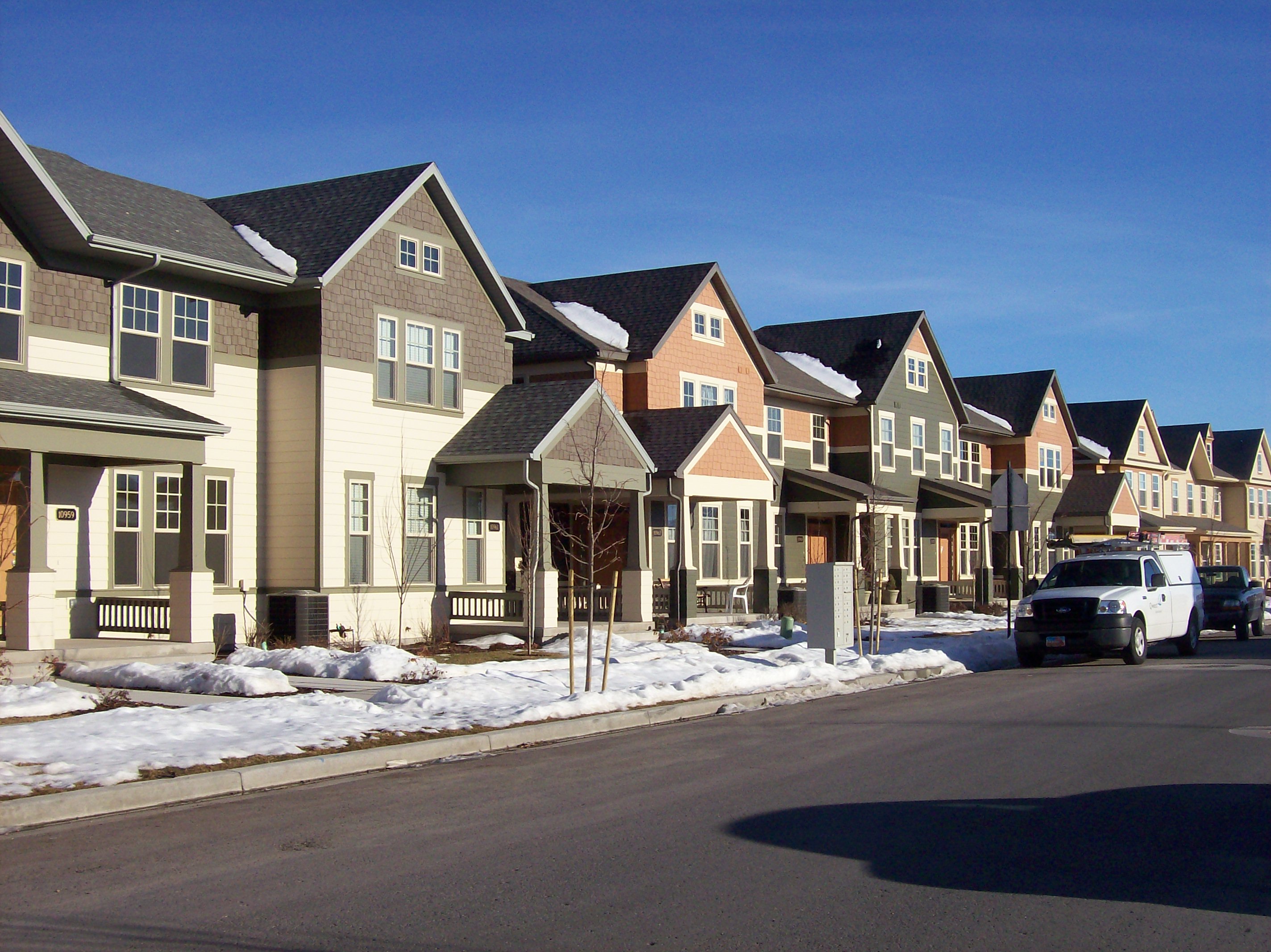
Appropriate – Multifamily facades not dominated by garages
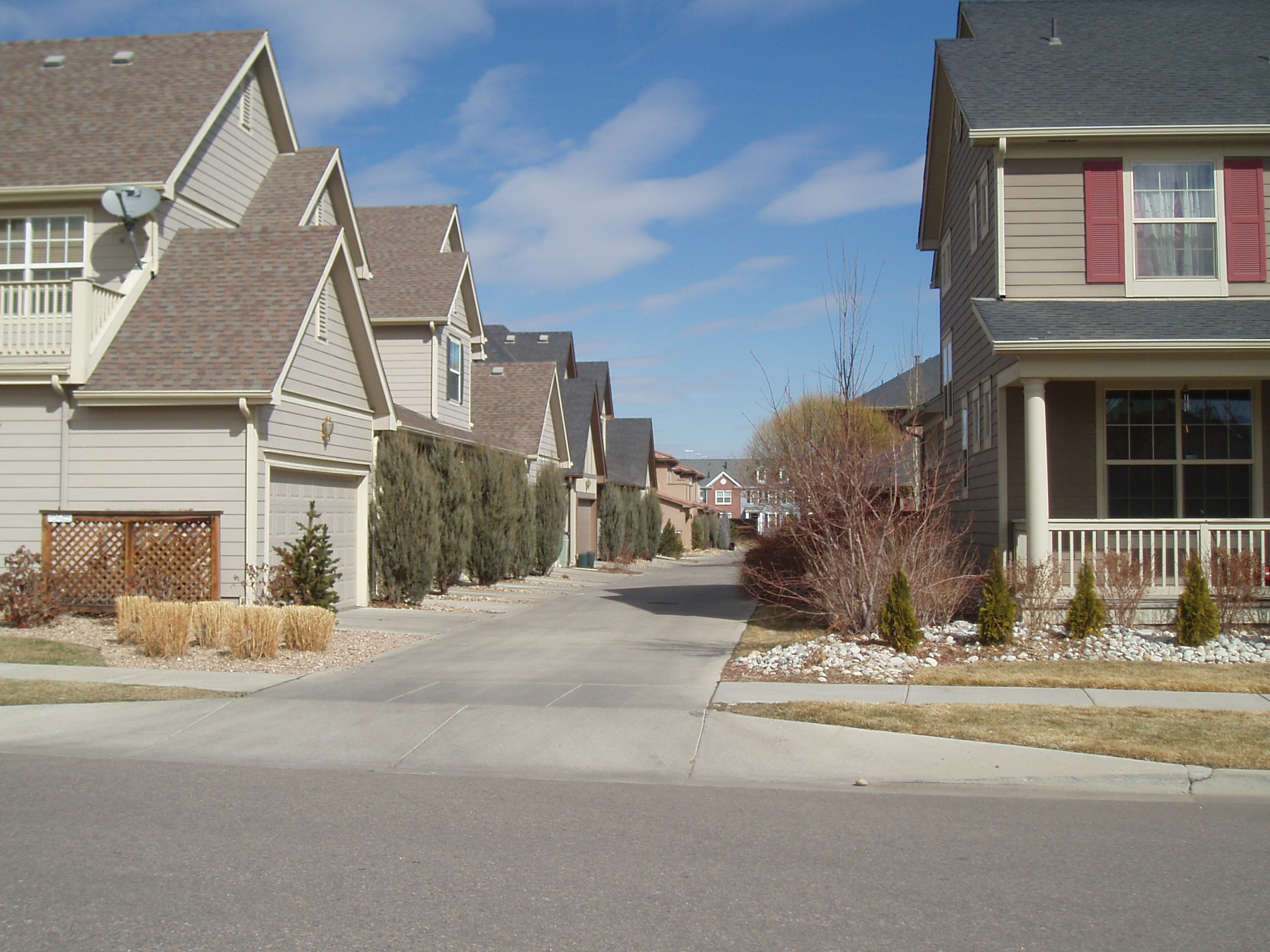
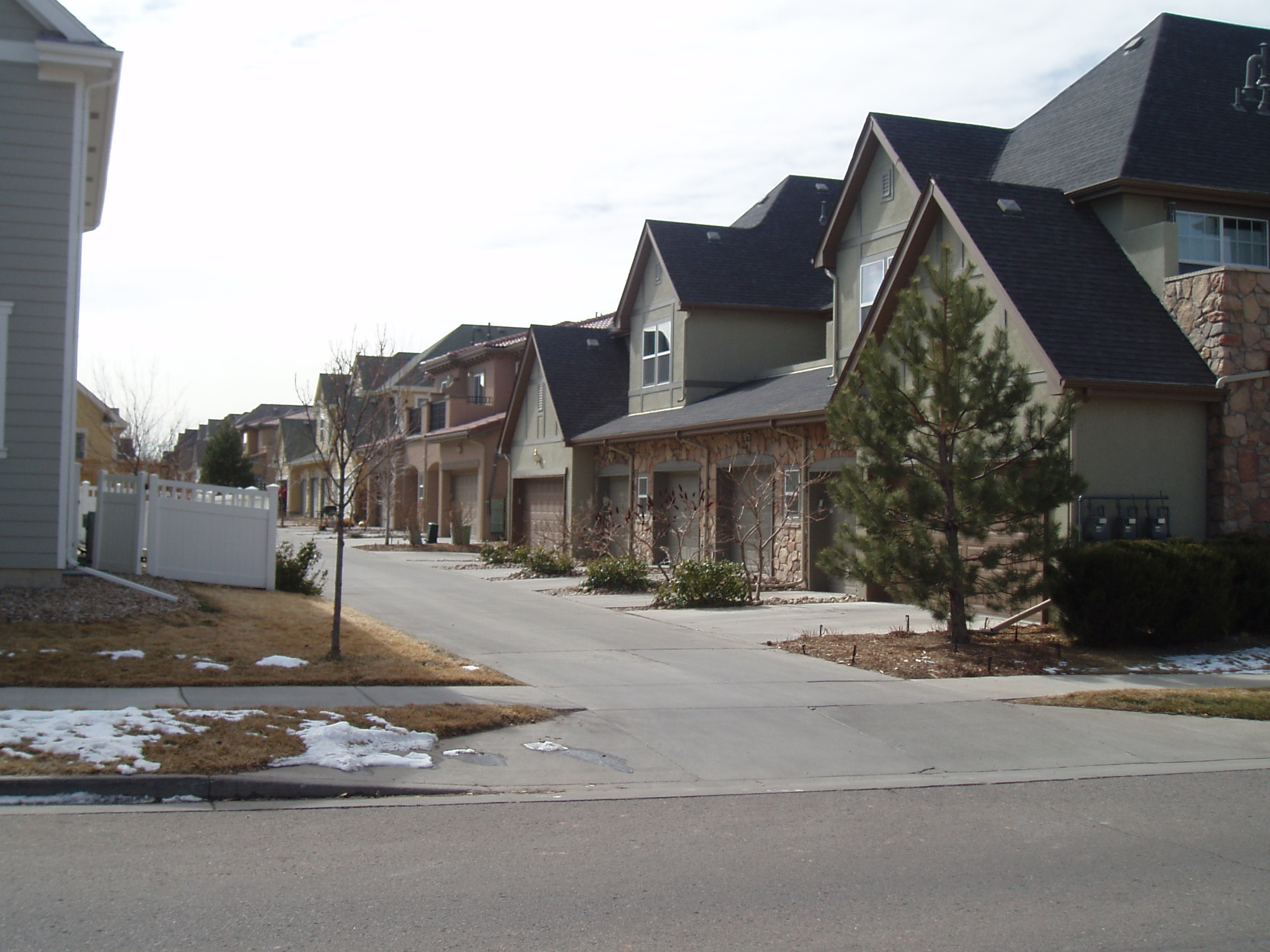
Garages accessed by private service drive
D. Open/Plaza Space. It is important to treat the unbuilt portion of a site as a designed, functioning space. The different elements of a site shall be arranged in a way that maximizes useable open/plaza space. This is especially important in multifamily projects. Buildings should be clustered and open space should be combined in larger, more useable areas. Creativity with open space design is also encouraged.
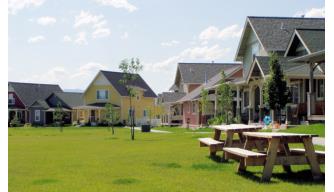
Buildings are clustered to maximize useable open space
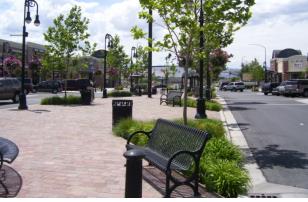
Plaza and open space within retail developments enhances the pedestrian and shopping experience
[Ord. O-46-2023 § 2 (Exh. A); Ord. O-02-2019 § 2 (Exh. A); Ord. O-11-2008 § 3 (Exh. B § 24.3)].
17.72.040 Architectural standards.
The architectural elements of a building can either enhance the building’s visual appeal or detract from the quality of the neighborhood. In order to prevent the construction of bland, out-of-scale buildings that are oriented to vehicular traffic and discourage pedestrian activity, the following minimum architectural standards shall be applied to commercial and multifamily development. Minor variations to these standards may be considered by the planning commission and city council with very specific justification provided by the applicant of how the proposal is more appropriate for the neighborhood and of higher quality than the standard.
For the purpose of this section, a duplex or twin home shall not be considered a multifamily dwelling. The architectural design standards contained in this section shall not apply to duplex or twin home dwellings unless contained in a development agreement.
A. Architectural Style/Theme. Commercial buildings should be similar in style as significant adjacent buildings. All facades of commercial and multifamily structures shall be designed with consistent architectural style, detail, and trim features as the primary facade. Separate structures on the site shall be designed similar to the primary structure, including colors, materials, and design elements.
B. Main Entrance. The main entrance of a structure should orient to major sidewalks, pedestrian ways, plazas, courtyards, or other public spaces. It shall also be clearly identifiable, and consist of a sheltering element such as a porch, stoop, awning, arcade, or portico.
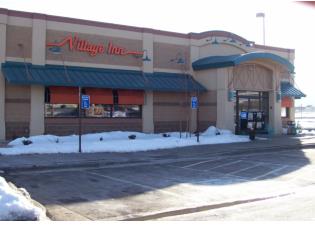
Clearly identifiable covered entry
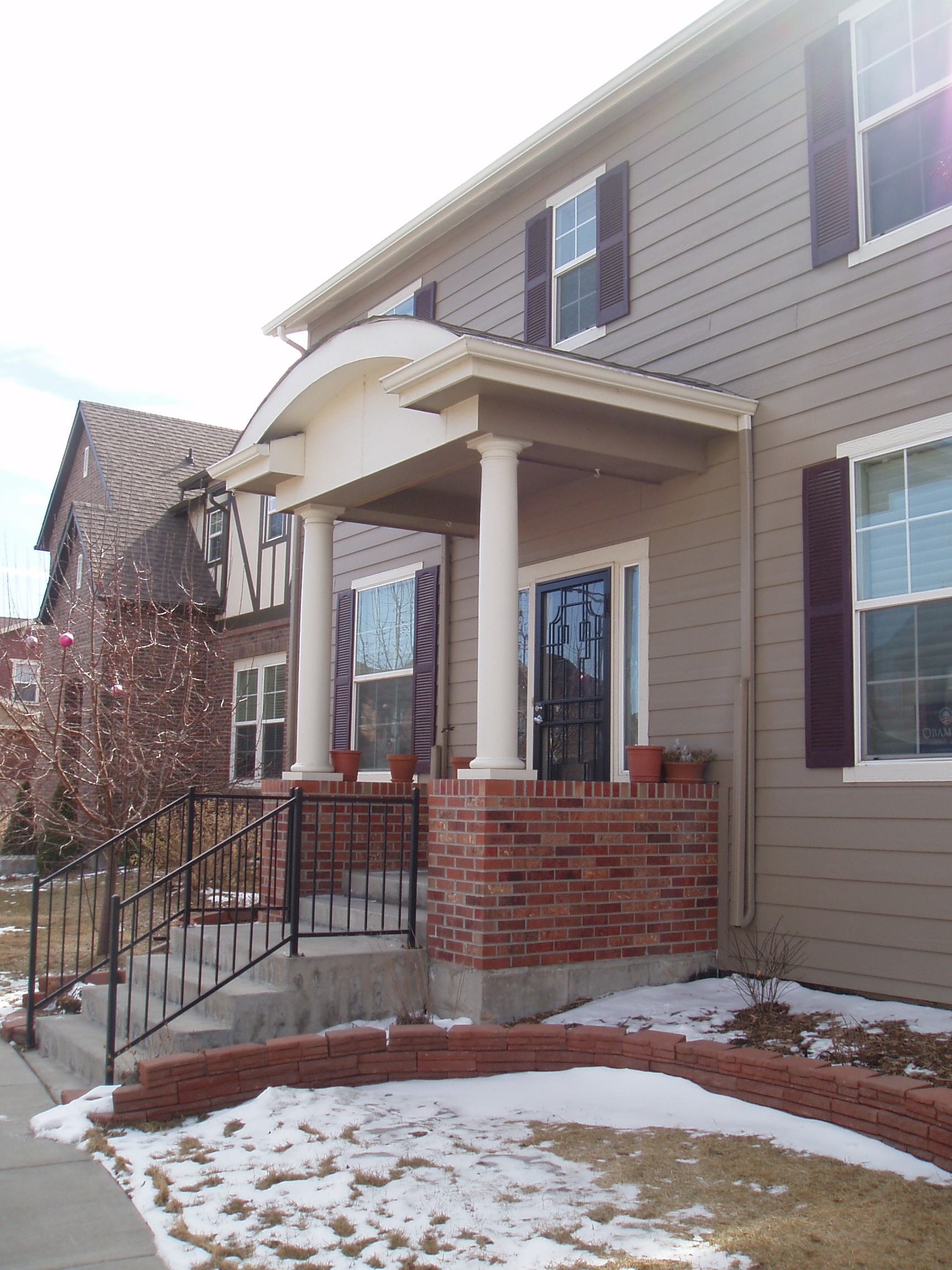
Multifamily unit entry defined with covered porch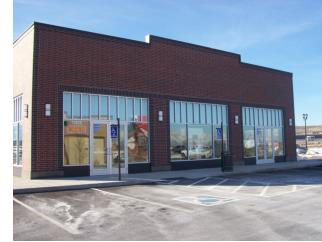
Inappropriate: Entryway not clearly defined; no sheltering element
C. Roof Design. The primary roof form of a structure should help reduce the perceived scale of the building. All commercial buildings shall contain either sloping roofs with overhanging eaves, or a decorative parapet and multiple roof planes and heights. Decorative cornices and roof projections such as cupolas or towers are also encouraged. Multifamily buildings shall contain overhanging eaves and multiple roof planes when pitched roofs are used, and varying parapet heights when flat roofs are used.
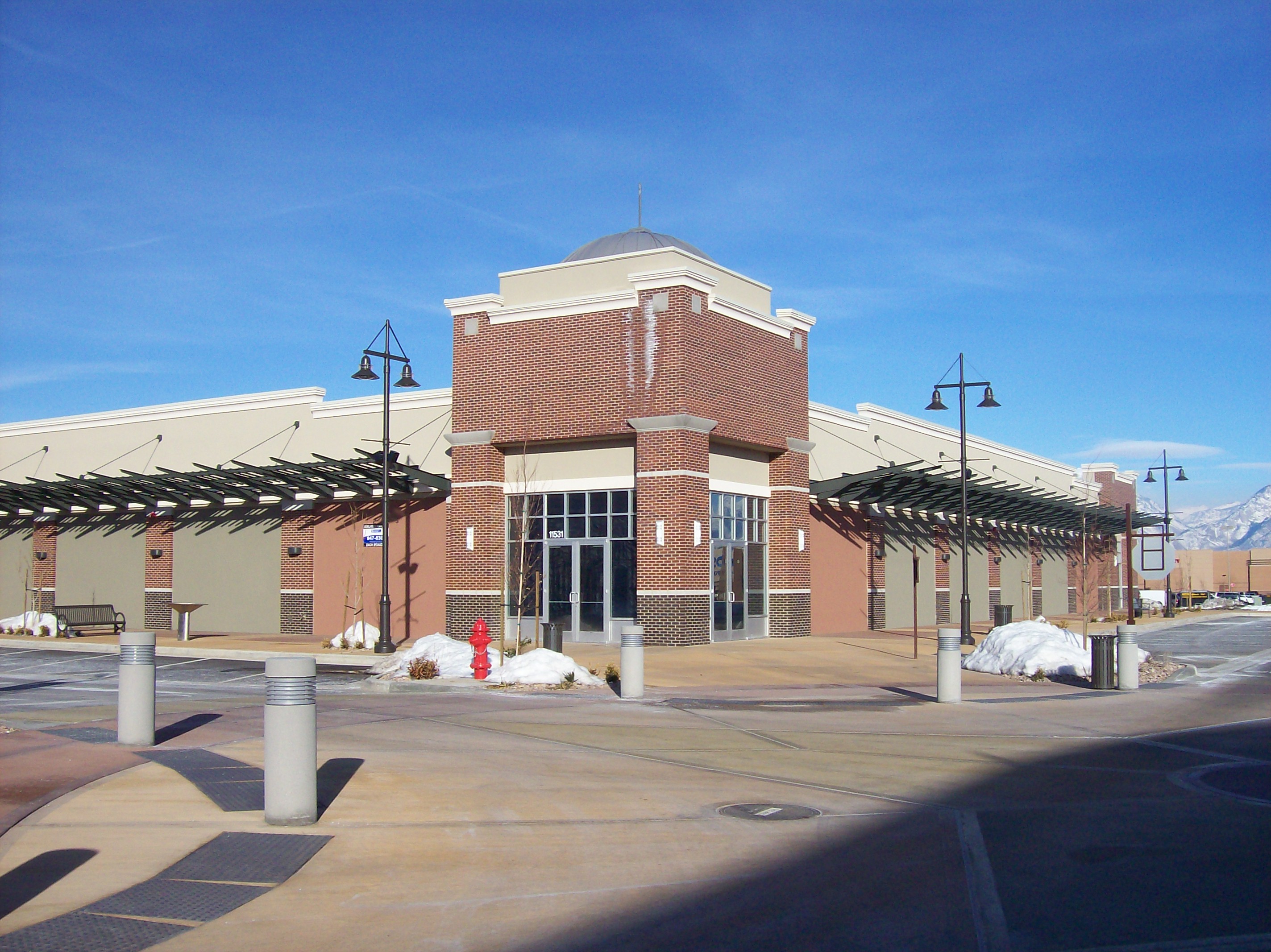
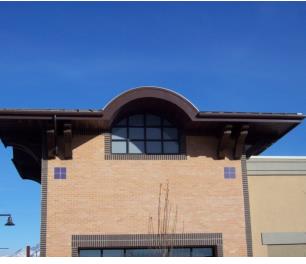
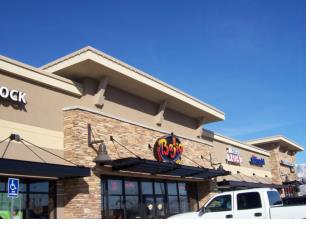
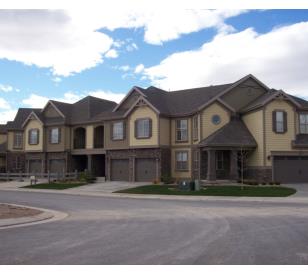
Decorative parapets and multiple roof planes/projections
D. Building Articulation. Vertical and horizontal articulation and relief reduces the perceived scale of buildings. Buildings shall include facade modulation (stepping portions of the facade), horizontal and vertical divisions (textures or materials), window patterns, offsets, recesses, projections, varied front setbacks or staggered and jogged unit planes within the same structure, and other techniques to help identify individual residential units in a multifamily structure, and to avoid large, featureless and/or panelized surfaces on commercial buildings. Large uninterrupted expanses of a building wall are prohibited.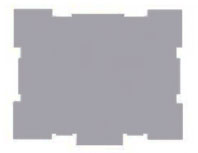
Appropriate Articulation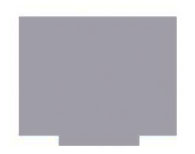
Inappropriate Articulation
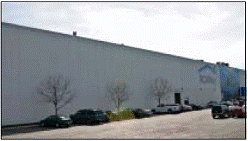
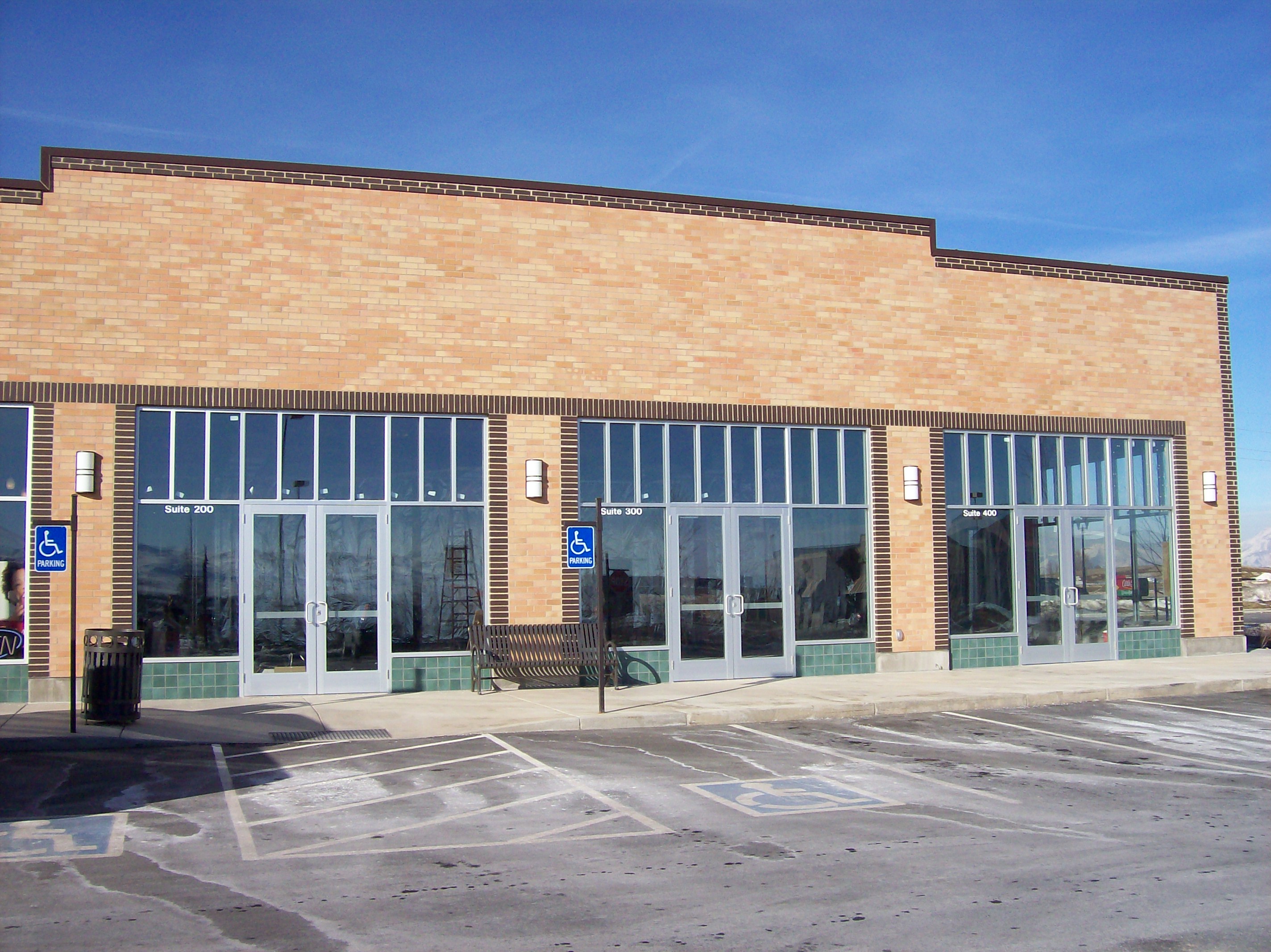
Inappropriate building articulation
E. Architectural Detailing. Pedestrian-scaled architectural features/details shall be incorporated into commercial and multifamily buildings to orient the building to pedestrian activity and to increase the overall visual appeal of the structure.
1. Commercial buildings shall incorporate a majority of the following architectural details: reveals, canopies, awnings, popouts, columns, decorative trim and moldings, architectural lighting, ornamental cornices, decorative masonry pattern, decorative doors and windows, exposed timbers, and trellis structures. All sides of a building shall include the chosen details.
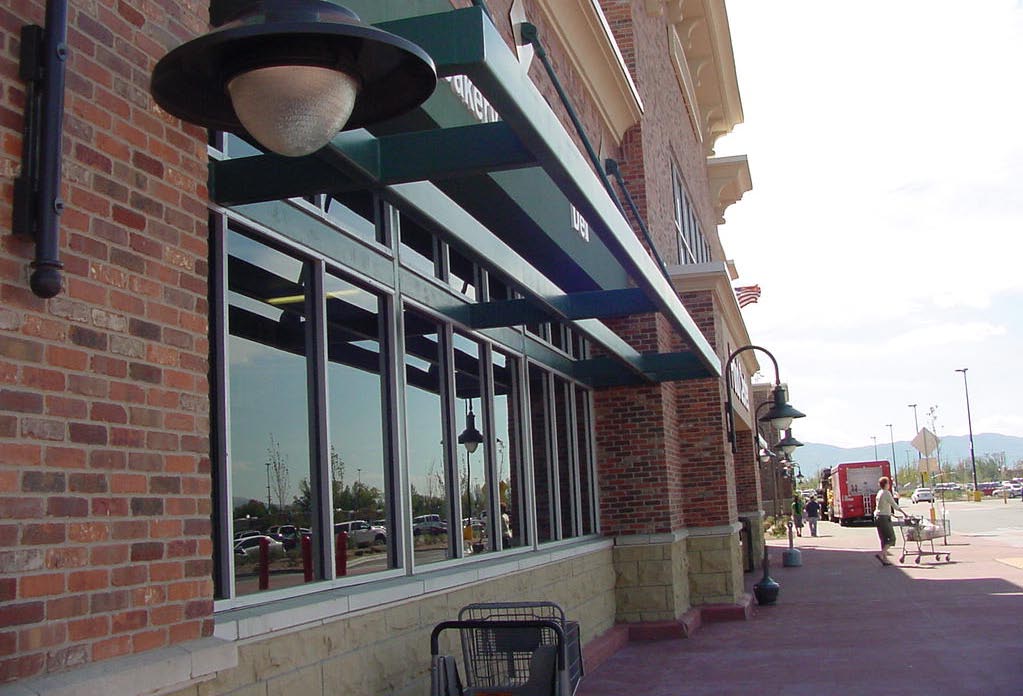
Area between building entrances is treated with awning and windows to create a pedestrian-friendly environment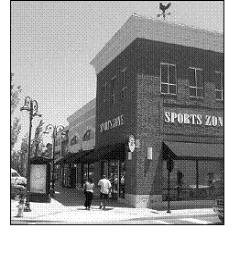
Appropriate use of awnings, building materials, and windows addressing the street and sidewalk
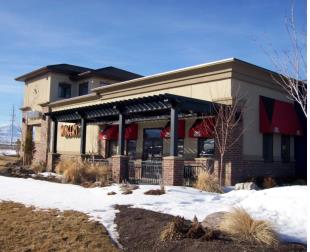
Trellis structure, decorative parapet, building articulation, awnings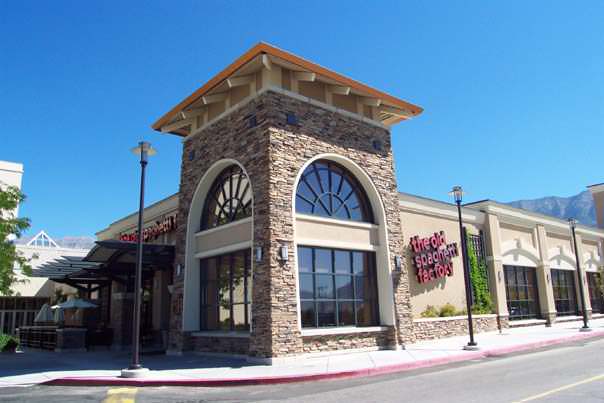
Tower feature, overhanging eaves, decorative windows, mix of building materials, trellis structures, etc.
2. Multifamily townhome buildings shall incorporate a majority of the following architectural detailing: decorative shutters, bay windows, popouts, trellis or arbor structures, porches, decorative gables, dormer windows, exposed timbers, balconies, columns, turrets, decorative trim and moldings, detailed grilles and railings, architectural lighting, decorative masonry pattern, window grids, and decorative doors and windows. All sides of a building shall include the chosen details, where applicable.
3. Multifamily stacked buildings shall incorporate a majority of the following architectural detailing: decorative shutters, bay windows, popouts, trellis or arbor structures, porches, decorative gables, dormer windows, exposed timbers, columns, turrets, decorative trim and moldings, detailed grilles and railings, architectural lighting, decorative masonry pattern, window grids, and decorative doors and windows. All sides of a building shall include the chosen details, where applicable. In addition to the above standards, the following shall apply:
a. Each unit above grade shall include a minimum of a 50 square foot balcony;
b. At grade or below grade units shall include a minimum of a 75 square foot patio; and
c. If rooftop amenities are provided, such amenities shall not be used in the calculation of overall required development amenities.
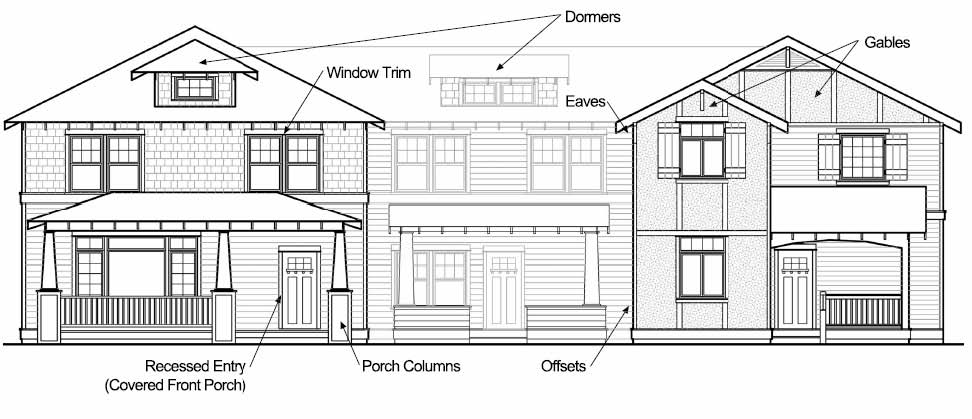
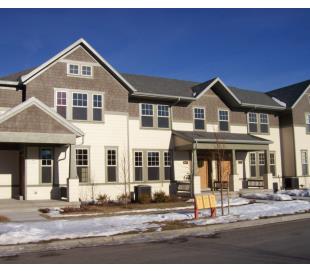
Porches, window grids, material mix, building articulation
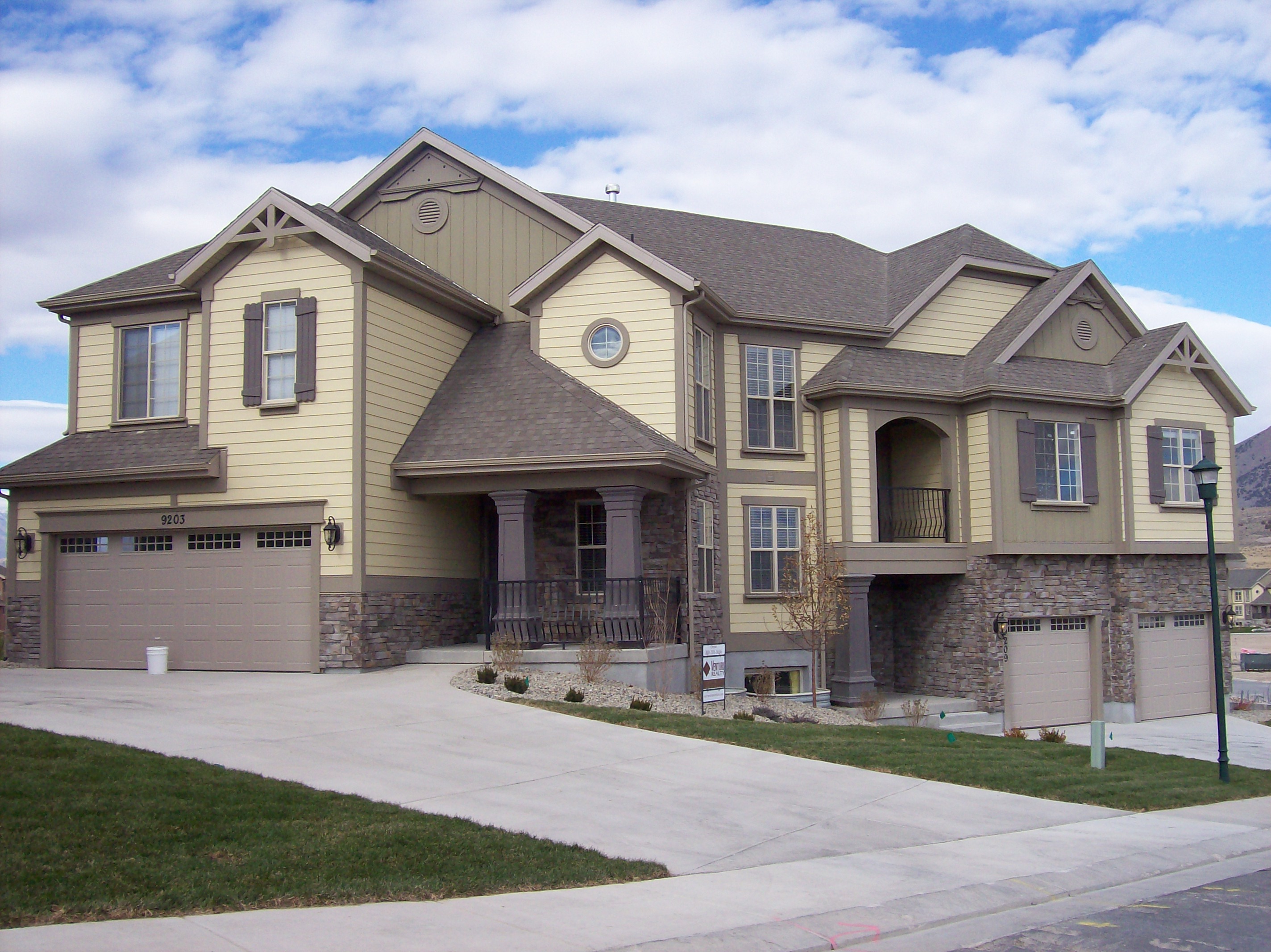
Porch, balcony, columns, building articulation, window grids, decorative garage doors, decorative roof treatments, multiple roof planes, variation in building color and materials
F. Building Materials. Buildings should incorporate materials used throughout the city and be similar in character and architectural theme as significant neighboring structures.
1. Multifamily structures shall utilize at least two exterior materials, including stucco, vinyl or fiber/cement siding, decorative rock/stone, brick, or other material deemed appropriate by the planning director. Each material shall be used on a minimum of 30 percent of the building, and used on all sides of the building. Other materials may be included as accents. Aluminum siding is prohibited.
2. All commercial buildings shall avoid large panelized products or featureless surfaces. Commercial buildings shall utilize an appropriate mixture of building materials on all sides, including brick, rock, fiber/cement siding, wood, glass, stucco, and colored architectural CMU (concrete masonry unit). Stucco may not be used on more than 50 percent of a building. Metal, plain CMU, or other materials deemed appropriate by the planning commission and city council may be used as accents only.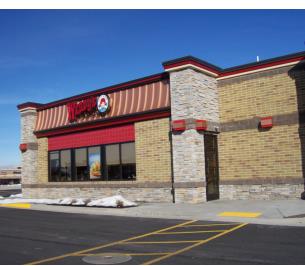
Varied materials: brick, stone, decorative CMU, and even tile and metal – identifiable franchise elements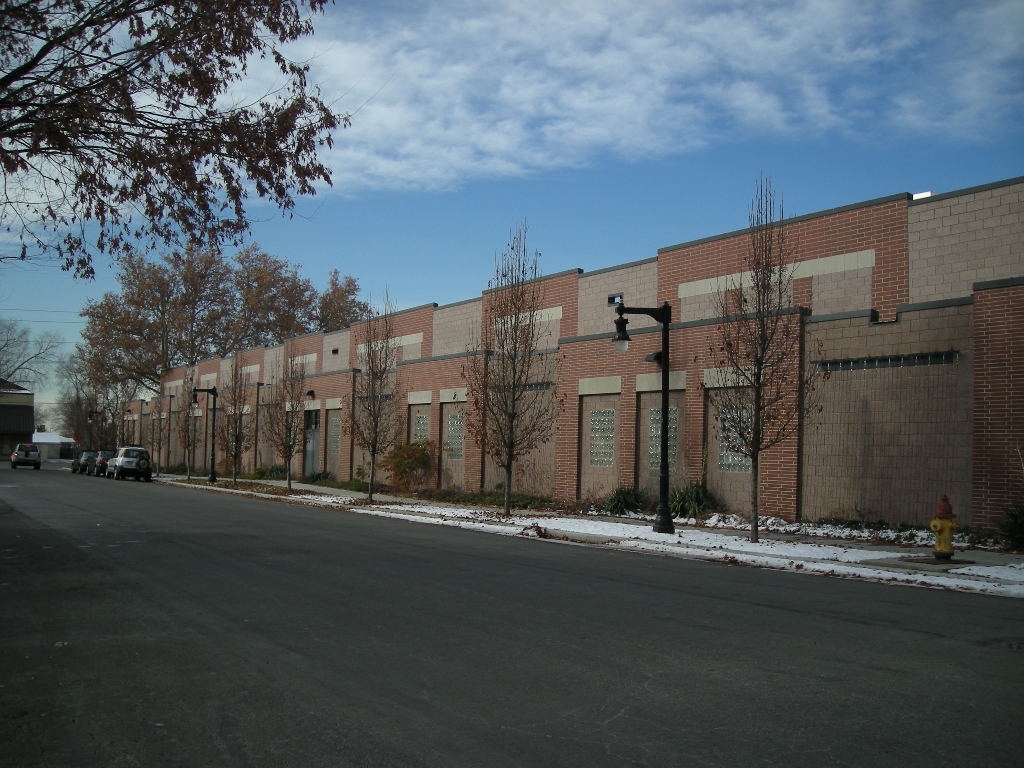
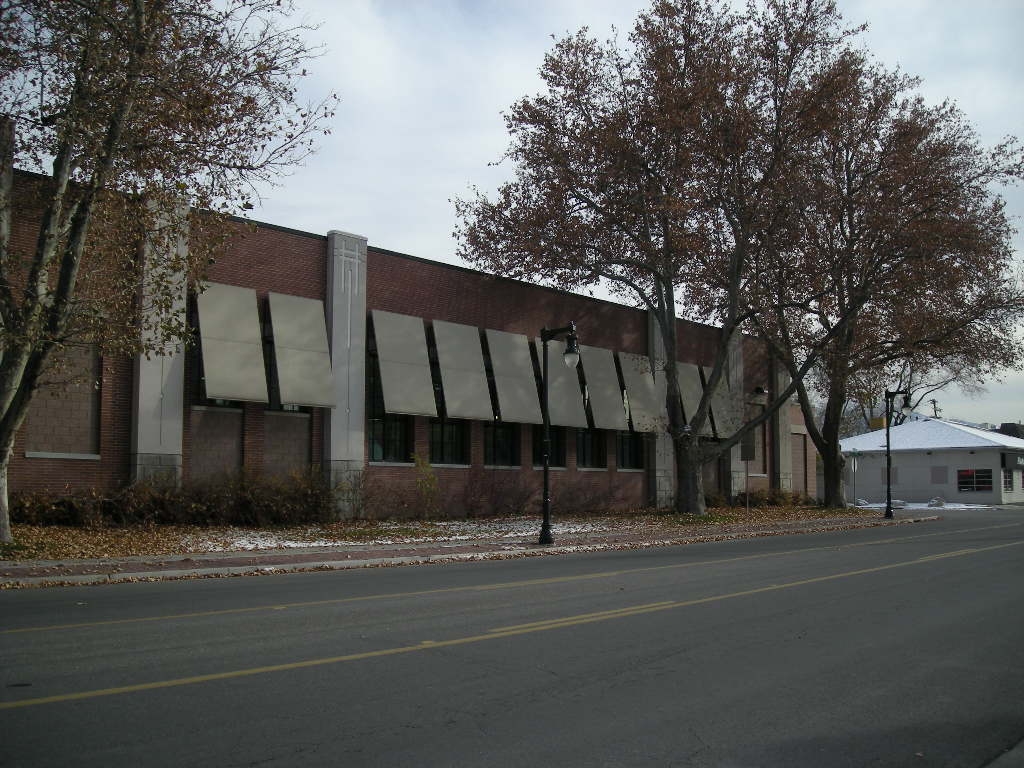
Architectural detailing and mixture of materials on all sides – especially all street-facing sides
G. Building Color. Buildings should not be restricted to using desert landscape colors, such as beige, tan, grays, browns, etc. A wide palette of colors is recommended, excluding any neon, ultra-bright, or reflective colors. A building’s color palette should be similar to that of significant neighboring structures. Franchise colors and elements may be incorporated, but shall not overpower the architectural form/theme of the building and/or development.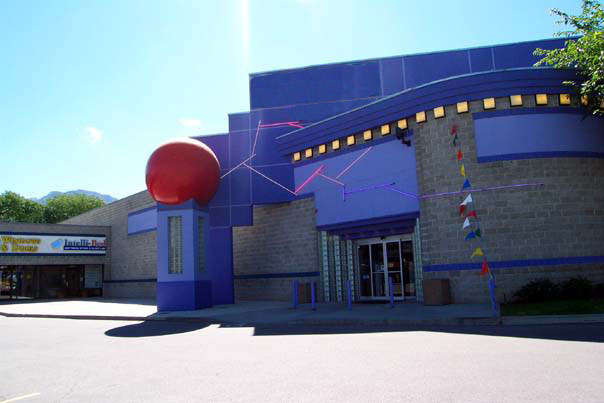
Inappropriate: bright colors and creative architecture overpower the building form and clash with architecture and theming of neighboring buildings and community
H. Multifamily Garage Doors. Garage doors shall not be the most prominent or visible feature on a building. They shall be accessed from the side or rear, or set back from the front facade. If garages are visible from the street, white doors are discouraged. Decorative doors are encouraged.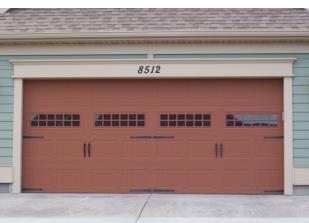
I. Lighting. All lighting shall be designed to be shielded and directed downward to prevent light glare from adversely affecting neighboring uses/properties. The light bulb or light source of building lighting shall not be visible from beyond the property. Building lighting and parking lot lighting should be decorative in design to add to the architectural style and character of the building and area. Lighting shall be reviewed based on aesthetics, glare, and adequate light for safety. A lighting plan and lighting design details are required with a site plan application.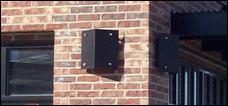
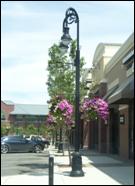
J. Mailbox Structures. Cluster mailboxes are generally required by the U.S. Postal Service for multifamily developments. These mailboxes, however, should not detract from the project, as they generally do when designed as a metal structure. Cluster mailboxes should emulate the buildings in materials and color.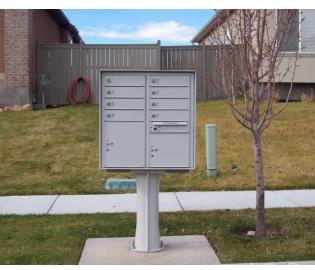
Inappropriate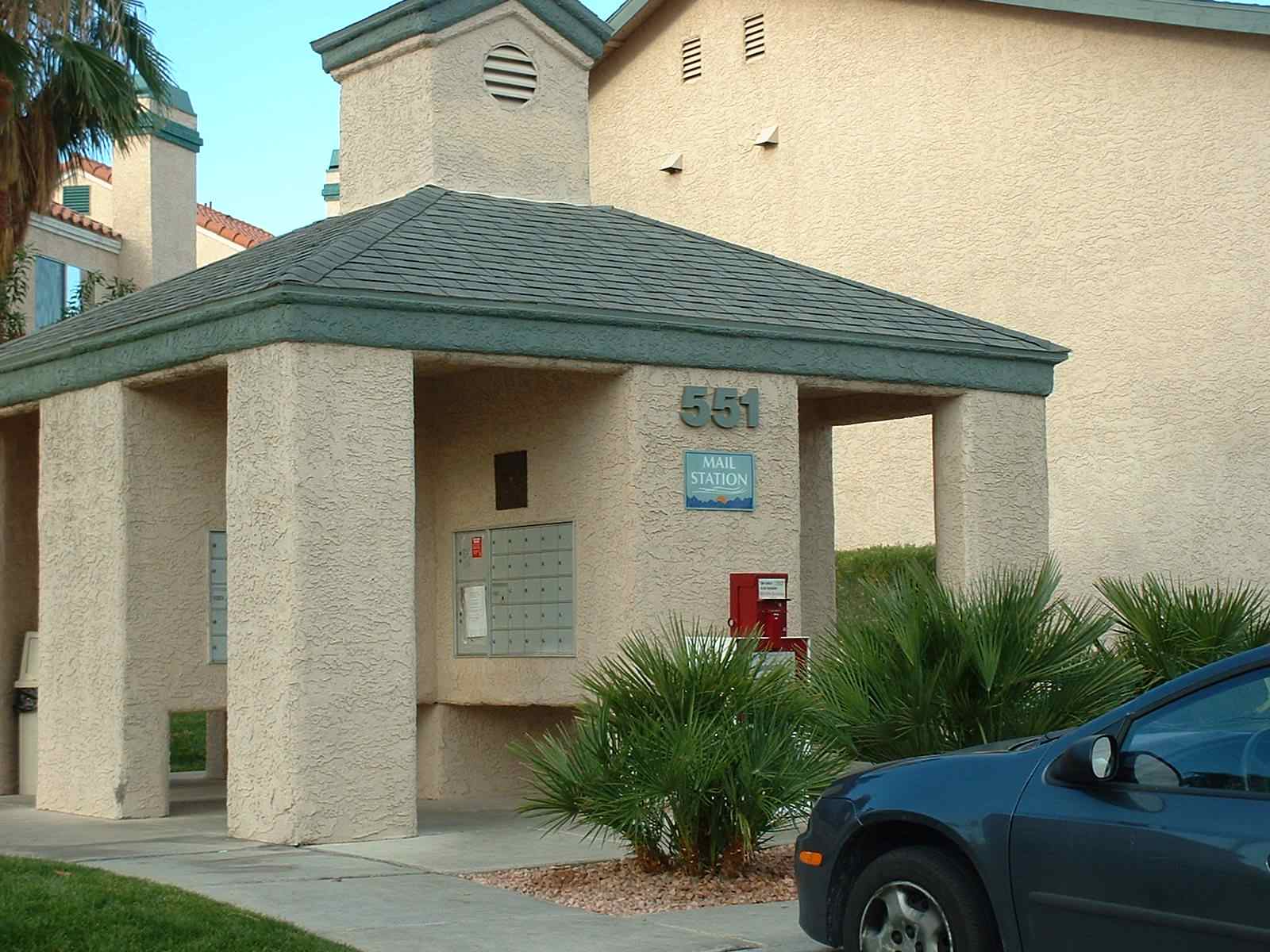
Appropriate
K. Mechanical Equipment. All mechanical equipment shall be screened so as not to be visible from any public or private streets. Screens shall be aesthetically incorporated into the design of the building and shall conform to the color and materials of the primary building. Screening includes walls, landscaping, parapet walls, or a combination. All electrical service equipment should be painted to match the wall color or screened to blend with the surrounding terrain.
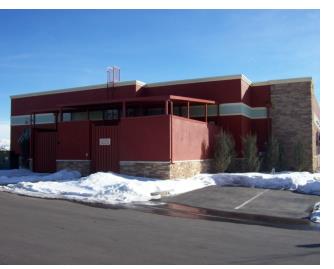
Screening for mechanical equipment matches building in material and color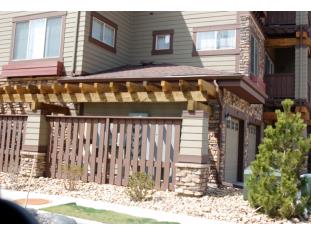
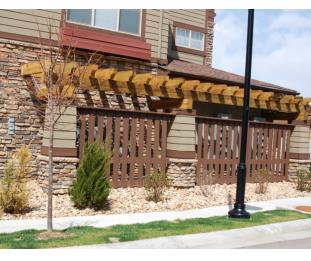
L. Storage, Loading Areas, and Trash Enclosures. Storage and loading areas and trash enclosures shall be located out of view from public streets, and shall be screened and designed with the architectural style of the building, including materials, colors, details, etc. Chain link fences and fencing with vinyl slats are prohibited as screening. The consolidation of trash areas between businesses is encouraged.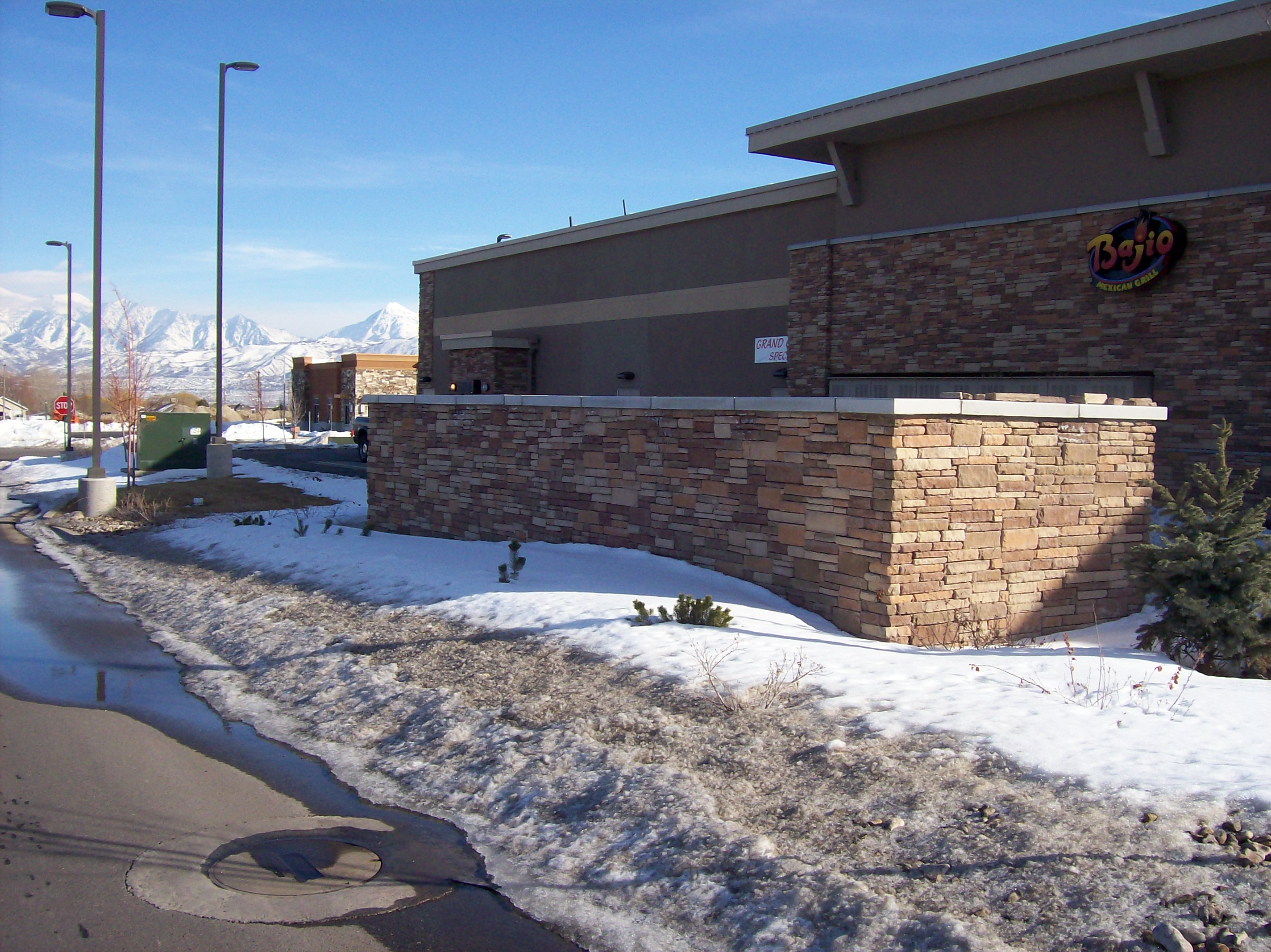
Screening wall – same materials as building
[Ord. O-50-2023 § 2 (Exh. A); Ord. O-11-2023 § 2 (Exh. A); Ord. O-09-2017 § 2 (Exh. A); Ord. O-25-2008 § 2 (Exh. A §§ 24.4.9 – 24.4.12); Ord. O-11-2008 § 3 (Exh. B § 24.4)].


